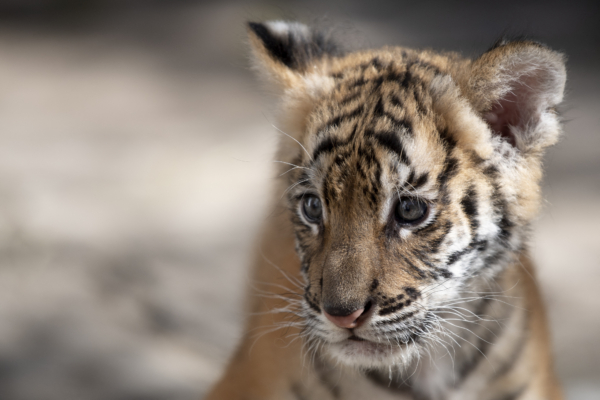The Sumatran tiger is a rare and critically endangered animal, with a very small population in the wild. Recently, a Sumatran tiger cub was born at the San Diego Zoo Safari Park in California, adding a glimmer of hope for the survival of this endangered species.
According to reports from the Associated Press, the little tiger was born on August 23. Its mother, Jillian, gave birth to her first litter.
Experts at the zoo said that Jillian quickly formed a bond with the cub, displaying expected maternal instincts and behaviors.
Lisa Peterson, the Senior Vice President and Chief Operating Officer of the zoo, expressed excitement about the birth of this special tiger cub in San Diego. She mentioned that the birth of this cub adds important genes from Jillian to the Sumatran tiger population, promoting genetic diversity and health within the species.
The Sumatran tiger is classified as critically endangered, with only 400 to 600 individuals remaining in the wild, primarily found on the island of Sumatra in Indonesia.
The zoo stated that Jillian and her newborn cub will remain in their den for the next few weeks. Experts will continue to monitor their health closely.
The National Geographic magazine highlights that the Sumatran tiger is a subspecies native to the island of Sumatra and is the smallest among all tiger subspecies. Their small size is attributed to living on isolated islands.
Compared to other tiger subspecies, Sumatran tigers have denser stripes and a darker orange fur color, allowing them to better blend into their tropical rainforest habitat.
Similar to all tigers, Sumatran tigers are carnivores and hunt a variety of prey regardless of size, including fish, monkeys, wild boars, tapirs, and deer. They hunt at night and conduct large-scale hunts about once a week.
Sumatran tigers can reach speeds of up to about 40 miles per hour (64 kilometers per hour) while running, but their endurance is limited, so they must use their speed wisely. This is why they are ambush predators, approaching their prey slowly and quietly before striking suddenly.
Habitat loss for the Sumatran tigers means that they must travel longer distances to find prey, sometimes up to 18 miles (29 kilometers).

